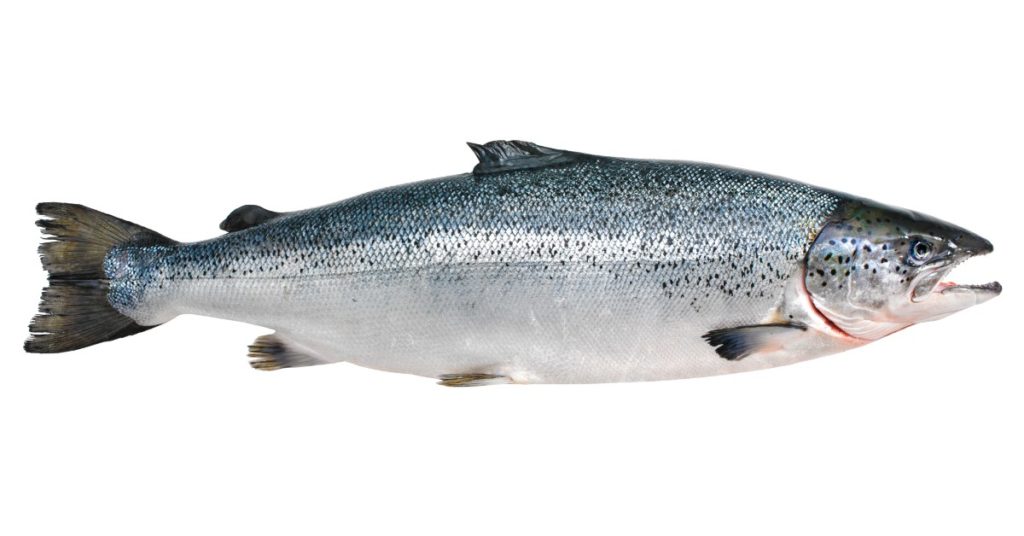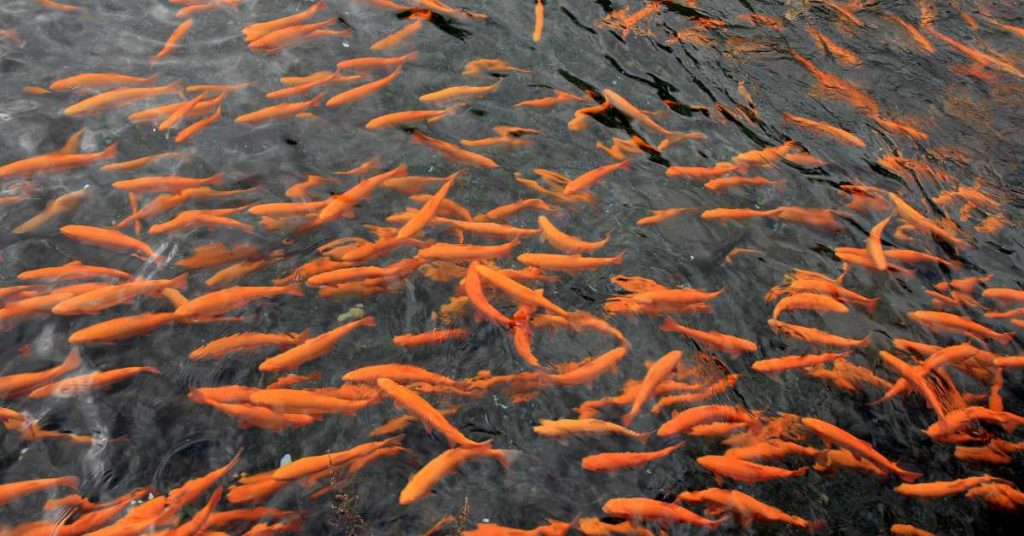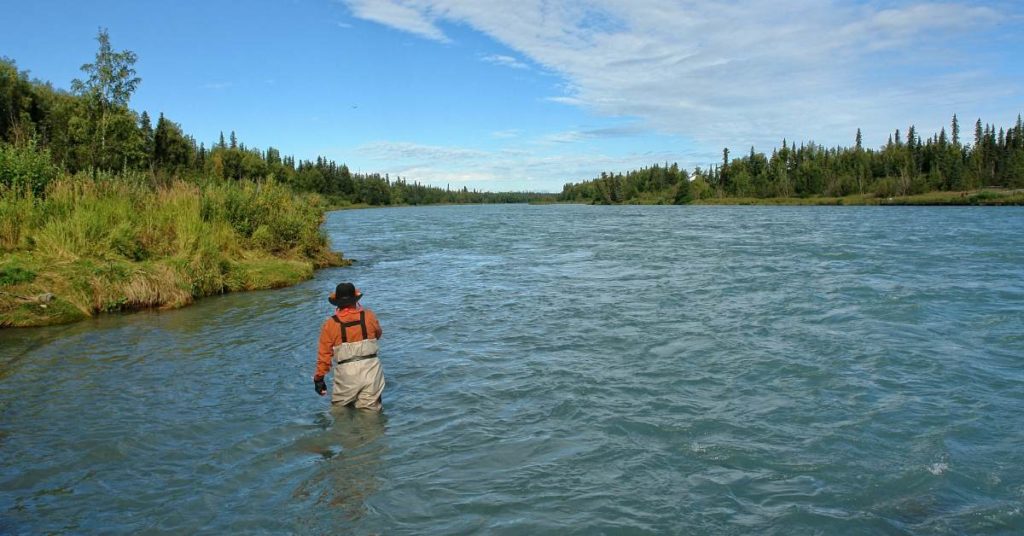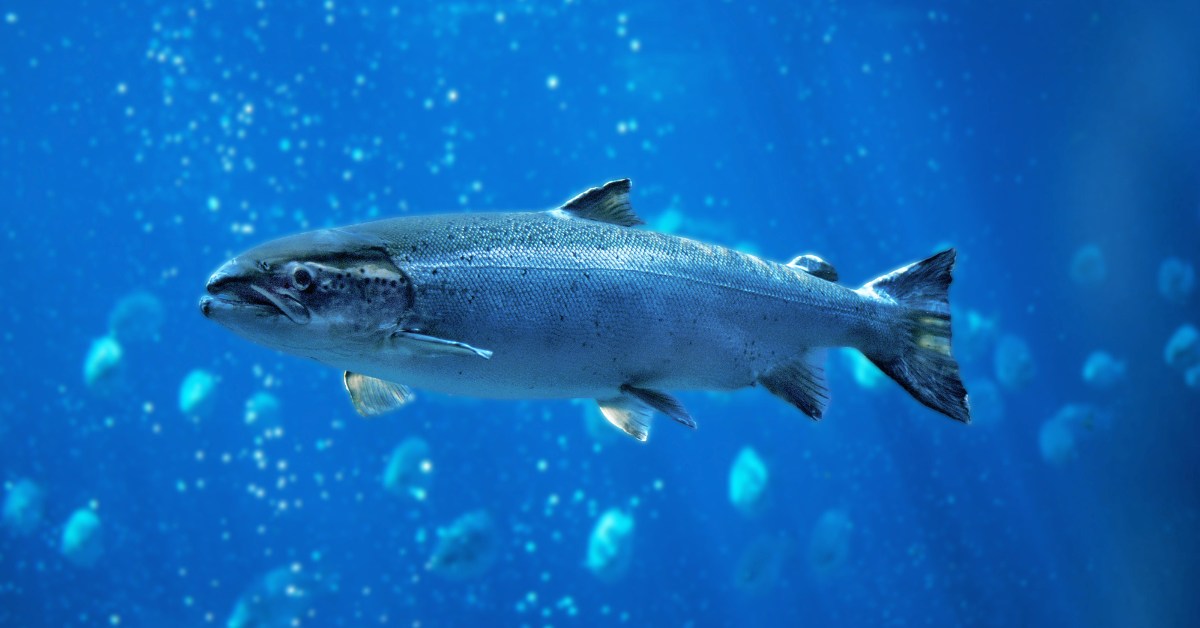Salmon Facts is proud to announce the acquisition of Wild Atlantic Salmon, an authority on the topic of the ecology and conservation of salmon species of the Atlantic Ocean. The acquisition was effective on June 12, 2022.
Their former website, wildatlanticsalmon.org, chronicled and promoted The Parr Project starting in 2012 on Maine’s East Machias River. The project is based on successful salmon restoration methods used by Peter Gray on the River Tyne.
Wild Atlantic Salmon: A Comprehensive Guide
From the rivers of Scotland to the icy waters of Maine, the Atlantic salmon is one of the most iconic and sought-after fish in the world for both sport and as a food source. Found in both fresh and saltwater, this powerful fish can reach weights of over 100 pounds and grow up to 4 feet long.
The Atlantic salmon’s life cycle is fascinating and complex, involving a dramatic journey from coastal rivers to the open ocean and back again. The remainder of this article will provide a comprehensive guide to Atlantic salmon, including where to find them, how to get them, and how to cook them.
Wild Atlantic salmon are an anadromous fish species, meaning they live in the ocean but breed in freshwater rivers. Atlantic salmon are members of the salmon family along with brown trout, char, and whitefish. They are a popular choice for sport fishing as well as for their rich flavor and healthy omega-3 fatty acids.
The easiest way to identify an Atlantic salmon is by its orange-red colored flesh; wild-caught fish will have darker flesh than farmed salmon. The fish should also have a firm texture and small, evenly spaced scales.
The wild Atlantic salmon (Salmo salar) is a migratory fish that can be found in the cold, clean waters of the North Atlantic. Once abundant in many of the world’s waterways, this fish is now listed as an endangered species.
In this comprehensive guide, we’ll take a closer look at the wild Atlantic salmon, including its physical characteristics, behavior, diet, and reproductive habits. We’ll also examine the threats that it faces and discuss some of the recent conservation efforts being made to save this iconic species, as well as the economic impact.
Wild Atlantic Salmon Facts

What Are Wild Atlantic Salmon?
Wild Atlantic Salmon are an important part of the marine ecosystem in the North Atlantic. They are a migratory fish, meaning they travel long distances in order to spawn.
Atlantic salmon have been overfished in the past, but their populations are now recovering. Some people advocate for sustainable farming of salmon, while others believe that we should let nature take its course and allow the wild salmon populations to rebound.
Where Do Wild Atlantic Salmon live?
Salmon are a type of fish that can be found in both fresh and saltwater. There are five different species of Pacific salmon, which all live in the Pacific Ocean, and two species of Atlantic salmon, which live in the Atlantic Ocean and some rivers in North America.
Salmon are an important fish in the Atlantic Ocean. They are a source of food for many marine animals and they are also commercially fished. Atlantic salmon are anadromous, which means they live in the ocean but migrate to freshwater to spawn. Spawning is the process by which salmon lay eggs in rivers and streams.
Most of the Atlantic salmon caught by fishermen are from hatcheries, meaning that they were raised in captivity and released into the wild. However, there is a small population of wild Atlantic salmon that still exists. These fish live in a few rivers in Canada and the United States
What do Wild Atlantic Salmon eat?
Atlantic salmon are carnivorous and feed mostly on small fish and invertebrates. Their diet varies depending on their location and the time of year. In the early spring, they feed mainly on zooplankton. As they grow larger, they eat more fish. Salmon in the ocean typically eat smaller fish than those that live in freshwater rivers and lakes.
Wild Atlantic Salmon Spawning and Migration
Wild Atlantic salmon are anadromous fish, meaning they spend the majority of their lives in salt water but return to freshwater to spawn. Salmon migrate from the ocean to rivers along the coast of the Atlantic Ocean. The journey upstream can be as long as 1,000 miles (1,600 kilometers).
The wild Atlantic salmon is an iconic fish that has been struggling in recent years. The species has been in decline for decades, and its population has fallen by 90% since the 1970s. Atlantic salmon are now classified as endangered in some parts of the world.
There are many factors contributing to the decline of wild Atlantic salmon, but one of the most important is the loss of suitable spawning and migration habitat. Salmon need clean, cool water to lay their eggs and rear their young. They also need access to rivers and streams where they can migrate to feed and grow.

Salmon typically spawn in the fall, when water temperatures are cooler. After spawning, the adults die and the eggs incubate in the gravel for several months. When the fry hatch, they spend a few weeks in the river before migrating to the ocean.
During their time in the ocean, the juveniles and adults eat primarily fish. When salmon return to their natal rivers to spawn, they stop eating. They turn color and seem to grow weak as their energy reserves are depleted until death.
Since it is the end of the salmon’s life when they return to their birthplace, scientists now think that some fish recognize familiar landmarks in specific streams where they were born and use them as an orientation cue.
Fishing for Wild Atlantic Salmon Around the World
Fishing for wild Atlantic salmon around the world is a popular pastime for many anglers. The fish are highly prized for their beauty and sporting qualities and can be found in many different areas around the world.
Several different techniques can be used when fishing for wild Atlantic salmon, and the best method will often depend on the specific location. In general, however, most anglers use either fly fishing or spin fishing methods.

Fly fishing is a very popular method for catching wild Atlantic salmon and can be done from both land and boat. This method involves using a light rod and reel, and a relatively light line. The lighter the tackle, the more sensitive it is to detect strikes from wild fish. In addition, small, hand-tied flies are used as bait. These flies must be matched to the hatch of insects that salmon feed on while they are in freshwater rivers and streams.
Bait fishing with lures or live bait such as worms is done, too, although less it’s sportsmanlike than using fly fishing tactics only. Bait fishing can be done both from land and by boat.
Wild Atlantic Salmon vs Farm-Raised Salmon
The debate over wild-caught salmon versus farm-raised salmon has been around for years. While both types of salmon have their pros and cons, there are some key differences that consumers should be aware of.
Wild-caught salmon is, as the name implies, caught in the wild. These fish are typically caught in the ocean using nets or lines and are then transported to markets or processing plants. Farm-raised salmon, on the other hand, are raised in man-made enclosures, typically in freshwater ponds or cages in coastal waters.
Wild-caught salmon is often seen as the healthier option because it is caught in its natural habitat and is not exposed to the same hormones and antibiotics ass farm-raised salmon.
However, farm-raised salmon can be just as healthy as wild-caught salmon. Farm-raised salmon have lower mercury levels and higher levels of omega-3s than wild-caught salmon. It also takes less than half the time to gain weight from farm raising versus how long it would take in the wild. In addition, fish farmers attempt to mimic a natural environment for their fish by producing “copies” of lumpsuckers, tide pool sculpins or seagrasses that provide shelter or act as a form of camouflage.
Since 2006, farms have also been required to generate an Environmental Management Plan (EMP) when they submit a proposal for marine finfish aquaculture in federal waters anywhere in the United States. This document is prepared based on guidance provided by NOAA Fisheries National Marine Aquaculture Initiative, which outlines best practices to reduce both the short and long-term impacts of fish farming.
The Future of the Wild Atlantic Salmon
The wild Atlantic salmon is one of the most iconic fish in the world. It is also one of the most threatened. Overfishing, pollution, and the construction of dams have all contributed to a drastic decline in wild salmon populations. In some areas, salmon populations have declined by over 90%.
There is some hope for the future of the wild Atlantic salmon. In recent years, there have been efforts to improve salmon habitat and increase salmon populations. These efforts have been successful in some areas, and it is hoped that they will be successful in others. The future of the wild Atlantic salmon is uncertain, but as the world’s oceans continue to warm, the future of the wild Atlantic salmon is in real jeopardy.
Salmon are cold-water fish, and they require cool water temperatures to thrive. As the ocean warms, salmon are being forced into smaller and smaller areas of suitable habitat. And as their numbers decline, so too does the food supply for the animals that depend on them.
The good news is that salmon are adaptable, and some things can be done to help them survive in a changing climate. But time is running out, and we need to act now if we want their populations to rebound.

